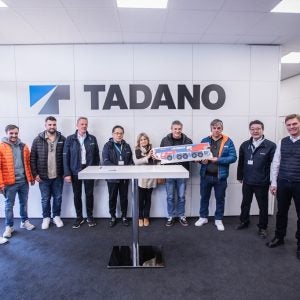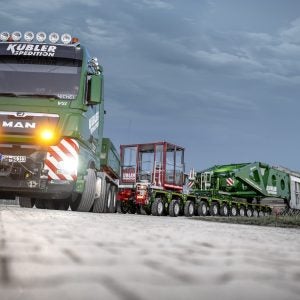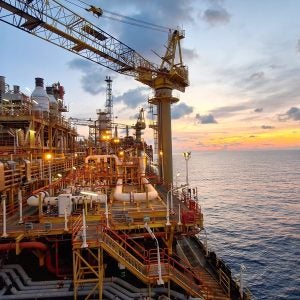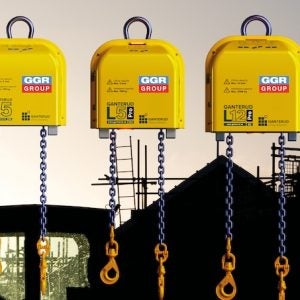They may look like lift cranes, but duty-cycle crawler cranes work in different sorts of jobs, in different sorts of markets. First, unlike lift cranes, much of their work is earthmoving or foundation work: shallow or deep excavation, for example, or dynamic compaction. Second, they have a higher-performance working life than lift cranes. A duty-cycle crane can do 30,000 cycles per month, a pace that would quickly wear out a normal lift crane.
Third, they are so specialised as to be nearly unique. “For some jobs, no other equipment can do the job in the same amount of time,” says Andreas Ganahl, managing director of Liebherr (HKG) Ltd. Other manufacturers of duty-cycle crawler cranes are Link-Belt, Hitachi-Sumitomo, Fushun Excavator Corp (FUWA), Kobelco and Sennebogen.
The specialised nature of duty-cycle crawler work requires manufacturers to build the cranes slowly and carefully. “Although we try to do as much standardisation as possible, a lot of machines are tailor-made according to customers’ needs.”
Ganahl has come to know this through 15 years working in Asia for the company, working as a service technician, aftersales service manager and, since 2001, MD of the Hong Kong business.
Liebherr subsidiaries sell and repair cranes in 40 locations around the world (and 20 outside of Europe), from Ashgabat, Turkmenistan to Yokohama, Japan. Dealers outside of Europe service cranes in about another 12 locations.
Liebherr has been trading in Hong Kong since the 1980s. The current company, Liebherr (HKG), was registered in 1995, and sells the other Liebherr Nenzing equipment made in Austria (small lift cranes, foundation equipment and maritime cranes) out of Hong Kong and an office in Shanghai.
By the late 1990s, the business had outgrown existing space. “We had to do something,” Ganahl says. “There were 200 units on the market, and we couldn’t repair them properly in our workshop on the 13th floor. We were looking for a bigger place.” It found one in 2000.
Although the Hong Kong market was beginning to turn down just as the company bought the place, it still hired 60 workshop employees, and began refurbishing five or six secondhand cranes for export per year. “The idea was to clean up the market, send duty-cycles to the Middle East and Russia, and then stimulate demand for new cranes,” Ganahl said.
“With the market down, it was the perfect time to buy the cranes,” he says: they were inexpensive. “When things got busier, and they wanted to buy them, we only released them to cover the peak period.” None of the refurbished units have been sold back to Hong Kong since.
In fact, Ganahl had other plans. “The idea to make cranes there was born two years ago. The market was pushing ahead, and it lacked machines.”
“The factory in Austria was more or less sold out and had limited space on production. As we had experience with overhauls we were confident that the assembly of a new machine could be done in Hong Kong as well.”
So after applying for and starting payments on a loan to finance the new operation (Liebherr corporate only acted as guarantor), in May 2007 the facility began assembling two models. By year-end it had made 18 units of the 120t-capacity HS 885 and six units of the 90t capacity HS 855 HD. The total number built by end of 2009 is expected to be 43.
The Nenzing, Austria, factory sends crane uppers, components and steel structures (including crawler tracks) in 40ft containers. In Hong Kong, workers finish the upper, and do final welding and sandblasting. It receives the main chords and welds them into complete booms.
Ganahl says that there are not any plans to expand the range of cranes manufactured there; demand for the 65t capacity HS 845 is too small to bother setting up manufacturing, and lift cranes are too different to be able to switch over to without major investment.
He remains upbeat about business in 2009, partly because of possibilities for export. “We have a few orders in hand. 2009 will not be so bad. There are major projects in Vietnam, Thailand and Taiwan. Some jobs are picking up because worldwide, machines could become available.”






